Prices in AUD. Shipping worldwide. Flat rate $8 postage per order within Australia. International by weight calculated at checkout. Read full terms.
-
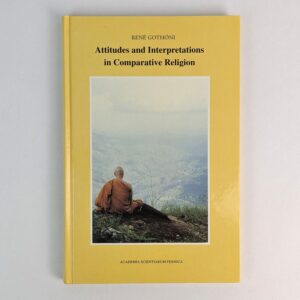
Attitudes and Interpretations in Comparative Religion
AU$50.00 Read MoreAdd to cartRene Gothoni
Helskinki: Suomalainen Tiedeakatemia, 2000.What is the attitude of the scholar of Comparative Religion to religion and religiosity? What is the specific method in Comparative Religion? Does the study of religions differ from other corresponding disciplines? The present volyme tries to answer these questions on the basis of fieldwork among Sinhalese Buddhist monks in Sri Lanka and Orthodox monks and pilgrims on the Holy Mountain of Athos in Greece. Apart from refining a more perceptive view of religion and religiosity, study elucidates the definition of religion and the principles applied in the comparative study of religions by factual cases from these two cultural fields. FF Communications No. 272 published by the Finnish Academy of Science and Letters.
-
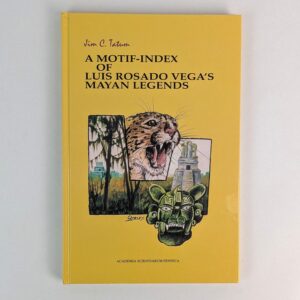
A Motif-Index of Luis Rosado Vega’s Mayan Legends
AU$40.00 Read MoreAdd to cartJim C. Tatum
Helskinki: Suomalainen Tiedeakatemia, 2000.The Mayan Culture, long recognised as among the most advanced indigenous groups of Latin America, possesses a rich heritage of mythology and traditions still very apparent in the Yacatan Peninsula at the closing of the twentieth century. Although Mayan legends have been studied and published as early as 1844, there exists no extensive motif-index dealing with the topic. This work attempts to help fill that need by indexing the works of Yacatecan writer Luis Rosaldo Vega. FF Communications No. 271 published by the Finnish Academy of Science and Letters.
-
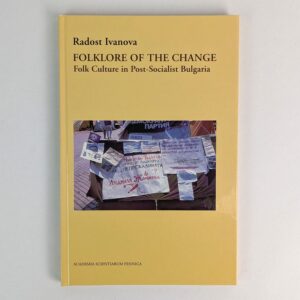
Folklore of the Change: Folk Culture in Post-Socialist Bulgaria
AU$40.00 Read MoreAdd to cartRadost Ivanova
Helskinki: Suomalainen Tiedeakatemia, 1999.The book analyses the developments taking place in Bulgaria in the years following November 10, 1989. The dynamics of the political and socio-economic changes in that period are comparable only to the most extreme periods of Bulgaria’s history. This study is not a political analysis. It is an attempt to follow the changes in people’s mentality. This book documents the enthusiasm of the negation of a chimera lasting half a century and the euphoria of the search for new roads. The volume consists of eight studies, seven of which deal with the democratic processes and developments in Sofia. FF Communications No. 270 published by the Finnish Academy of Science and Letters.
-
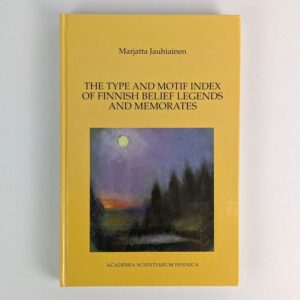
The Type and Motif Index of Finnish Belief Legends and Memorates
AU$65.00 Read MoreAdd to cartMarjatta Jauhiainen
Helskinki: Suomalainen Tiedeakatemia, 1998.Lauri Simonsuuri’s Typen- und Motivverzeichnis der finnischen mythischen Sagen (FFC 182), published in 1961 and reprinted in 1987, became a classic among the national legend catalogues. Marjatta Jauhiainen’s work not only updates and brings into English the catalogue, it is a thorough revision and enlargement of the classification system itself. In the introduction she surveys the history of collecting and the progress of belief-legend cataloguing on the international scene providing a concordance with Reidar Th. Christiansen’s The Migratory Legends (FFC 175, 1958/1992). A clarification of key terms, a subject directory and a map displaying tradition areas in Finland help the reader to orientate in the exceptionally rich store of belief legends and memorates. FF Communications No. 267 published by the Finnish Academy of Science and Letters.
-
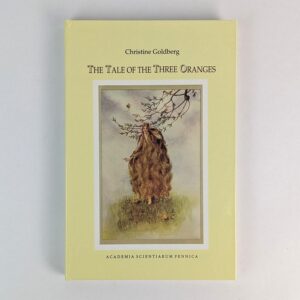
The Tale of the Three Oranges
AU$60.00 Read MoreAdd to cartChristine Goldberg
Helskinki: Suomalainen Tiedeakatemia, 1997.Folkloristic analysis of The Tale of the Three Oranges, tracing its narrative structure, motifs, and cross-cultural variants. FF Communications No. 263 published by the Finnish Academy of Science and Letters.
-
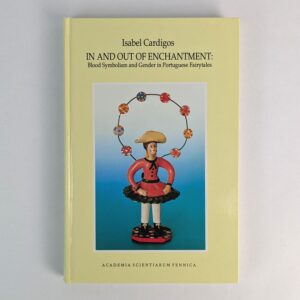
In and Out of Enchantment: Blood Symbolism and Gender in Portuguese Fairytales
AU$60.00 Read MoreAdd to cartIsabel Cardigos
Helskinki: Suomalainen Tiedeakatemia, 1996.The core of fairytales is the realm of enchantment. This study argues that the bloodshed associated with menstruation, defloration and childbirth–natural episodes in the lifecycle of women–is central to a syntax of enchantment and disenchantment that is common to all fairytales. It is a reflection on the gendered voices that have generated and contributed to the structure and symbolism of fairytales; and it takes shape along with the discussion of Portuguese versions of wide-spread tale types like AT303 (The Two Brothers), AT313 (The Girl as Helper in the Hero’s Flight and AT516 (Faithful John), as well as through an intriguing ecotype of Snake Helper tales (AT533*), ‘The Little Snake’. FF Communications No. 260 published by the Finnish Academy of Science and Letters.
-
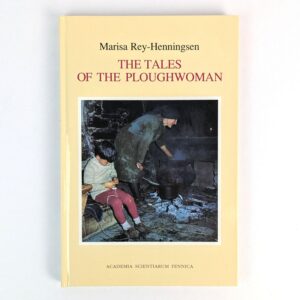
The Tales of the Ploughwoman
AU$40.00 Read MoreAdd to cartMarisa Rey-Henningsen
Helskinki: Suomalainen Tiedeakatemia, 1996.Appendix to FFC 254. FF Communications No. 259 published by the Finnish Academy of Science and Letters.
-
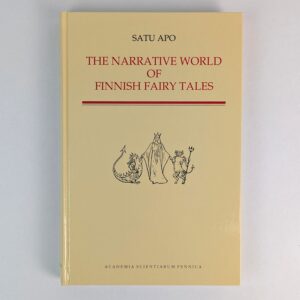
The Narrative World of Finnish Fairy Tales
AU$60.00 Read MoreAdd to cartSatu Apo
Helskinki: Suomalainen Tiedeakatemia, 1995.Finnish fairy tales represent the northern branch of the Western European fairy-tale tradition. Although Finnish epic folklore and mythology have been objects of great research interest, Finnish fairy tales have been studied surprisingly little. This study answers not only methodological but also the most important empirical questions, such as: what are the themes, plots and characters which have been able to entertain both fairy-tale tellers and their listeners from one generation to the next? How can these contentual elements be understood and interpreted within the framework of traditional Finnish folk culture? /// The methodological issues dealt with here include the question of how to approach traditional folklore material recorded in the 1800s, of which there is an enormous amount but very little accompanying contextual information. In order to analyse the contents of the tales, this study suggests the use of several semantic levels of abstraction as well as the systematic analysis of variation; only then is it feasible to present macrocontextual, interpretive hypotheses in which narrative and cultural structures are examined side by side. FF Communications No. 256 published by the Finnish Academy of Science and Letters.
-
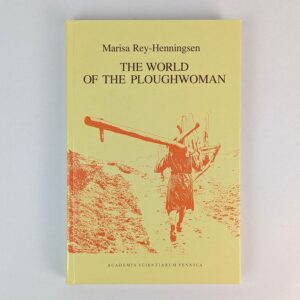
The World of the Ploughwoman: Folklore and Reality in Matriarchal Northwest Spain
AU$60.00 Read MoreAdd to cartMarisa Rey-Henningsen
Helskinki: Suomalainen Tiedeakatemia, 1993.This study is a contribution to the discussion of folklore as a mirror of society. Spanish Galicia offers a special opportunity for examining wellknown folktales in a different context because of the cultural and economic dominance of women and the matriarchal life style which characterized the region until recently. That matriarchy was deeprooted in Galicia and did not result from male migration in modern times, is demonstrated in the historical chapters of the book, while the anthropological chapters (on family systems, work patterns, matriarchal ideology, sexual behaviour, religion and magic) tend to show that all aspects of Galician culture have been “canonized” in folklore; folklore therefore must have gone through radical changes in order to conform with the local ideology. While the women in Galician folktales almost always appear in active and aggressive hero roles, this has nothing to do with “wishful thinking” or “poetic fiction”, for according to the matriarchal concept it is just the natural order of things. Surely the correlation demonstrated here between the social structure, gender roles, and ideology may also be observed in male-dominated societies, once we learn to disengage from the patriarchal concept of the “natural order of things”. FF Communications No. 254 published by the Finnish Academy of Science and Letters.
-
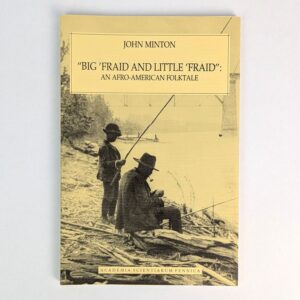
Big ‘Fraid and Little ‘Fraid: An Afro-American Folktale
AU$30.00 Read MoreAdd to cartJohn Minton
Helskinki: Suomalainen Tiedeakatemia, 1993.Though devoted specifically to the life history of the anecdote folklorists know as Tale Type 1676A/Motif K1682.1, Big ‘Fraid and Little ‘Fraid, this study more generally assesses the manner in which the circuitous epistemology of the tale indices compiled by, or in emulation of, Antti Aarne and Stith Thompson covertly subverted Richard Dorson’s controversial conclusions concerning the origins of Afro-American oral narratives, as well as the arguments of those who have challenged his position. FF Communications No. 253 published by the Finnish Academy of Science and Letters.
-
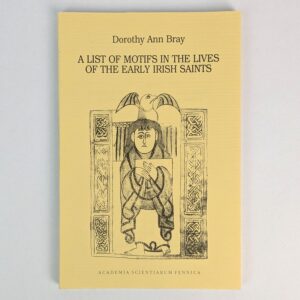
A List of Motifs in the Lives of the Early Irish Saints
AU$30.00 Read MoreAdd to cartDorothy Ann Bray
Helskinki: Suomalainen Tiedeakatemia, 1992.An identifying, classifying and documenting list of the themes of early medieval Irish saint biographies. FF Communications No. 252 published by the Finnish Academy of Science and Letters.
